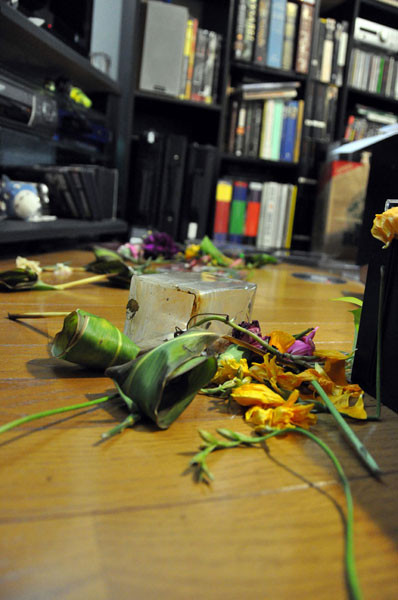Status: April 1, 2011
Tohoku Earthquake

At 2:46 p.m. on March 11, 2011, a magnitude 9.0 earthquake struck the northeastern coast of Japan. The fifth-largest quake to strike the planet since record-taking began, its effect shifted the earth’s axis, moved the nation of Japan 240 centimeters to the east, and sent a catastrophic tsunami rushing into coastal towns from Hokkaido to Kanto.
Hardest-hit was an area of Tohoku known as the Sanriku Coast, where sharp cliffs enclosing sunken estuaries only amplified the tsunami’s power. Entire towns were lost, with water marks as high as four stories on the few remaining buildings.
The disaster in the north was compounded by critical conditions at the Fukushima Dai-ichi Nuclear Power Plant. While the plant survived the quake itself, the following tsunami destroyed its backup cooling systems, leading to uncontrolled temperature rises in reactor cores and spent fuel pools.
With northern power systems inoperable, controlled blackouts have been implemented in Tokyo and the surrounding areas, with power-saving initiatives undertaken both by individuals and corporations. Though Tokyo has otherwise escaped most of the direct effects of the quake and tsunami, a news flash will send worried residents out to stock up on fundamental supplies, creating the impression of ongoing shortages.
At the Fukushima Dai-ichi Nuclear Power Plant, radiation fears remain. While plant workers, the JSDF, and Tokyo firemen work to control temperatures and restore fundamental systems, the 20 kilometers immediately surrounding the plant have been evacuated, and residents up to 30 kilometers away are still advised to remain indoors. Many embassies have further advised citizens not to go within 80 km of the plant as a precautionary measure.
Crops in the surrounding prefectures—particularly leafy vegetables—have been found with levels of radiation exceeding government limits, while drinking water as far away as Tokyo has been found with heightened radiation. These levels have since generally declined, leading to most advisories being lifted. The Japanese government and international organizations remain agreed that radiation outside the exclusion zone does not pose an immediate danger to human health.
Nearly 200,000 people remain evacuated in schools, gymnasiums, and government centers across Kanto and Tohoku, with entire towns relocated to other prefectures. Most transportation links have been at least partially restored, but gasoline shortages and the sheer scale of the affected area still hamper aid efforts. The number of dead and missing is estimated to be over 27,000.
Everywhere from Hokkaido to Kyushu, and even within the quake-affected areas themselves, the nation has mobilized in volunteer and donation drives to help the needy. Gas, water, and power lines are being reconnected, while dozens of temporary housing units have been constructed, with thousands more on the way.
As of April 1st, the occasional aftershock still strikes, conditions at Fukushima Dai-ichi remain uncertain, and shelter life continues to take a mental and physical toll on evacuees. The situation is not completely stable, but it is improving, and the nation is committed to rebuilding.
Published in April 2011. Photo © 2011 Michael Kanert.
